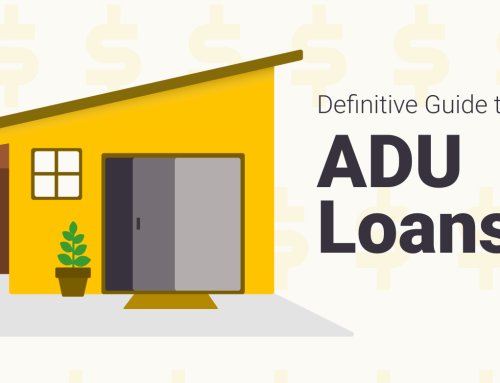Prefab accessory dwelling units are surging, with more companies on the scene than ever before. And prefabs have a lot going for them!
“Prefab” means the ADU is prefabricated and partly assembled in a factory, then delivered in modules or sections to your lot, where the installation is completed.
Prefab ADUs require much less on-site construction than stick-built units. A prefab installation takes just weeks instead of months, which is a huge plus for homeowners who want to avoid disruption on their property.
With a prefab ADU you have fewer worries about unpredictable construction schedules, material supply-chain delays, and repeated visits from city inspectors. That’s great for homeowners.
But two big questions remain:
- How much does a prefab ADU cost?
- Are prefabs a better deal than stick-built ADUs?
Is a prefab ADU right for you? Enter your info below to receive our Prefab ADU Checklist!
Price ranges for prefab ADUs including installation
Studio, approx. 350 SF: $190,000-$304,000
1-bedroom, 320-600 SF: $219,000-$320,000
2-bedroom, 567-800 SF: $290,000-$437,000
2-bedroom, 864-1,000 SF: $343,000-$410,000
The approximate price ranges above include the installation of the ADU–very important because it’s quite different from the prefab company’s “base price.” The base price may include the unit but not the installation or other construction phases. Scroll down for more info on that.
These prices also reflect modest to high-end prefabs, which is why a 775 SF ADU can cost $437K at one company and an 864 SF ADU can cost $343K at a different company.
Keep in mind that prices change from year to year. Prefab companies should give you a current itemized quote that clearly states which costs are included in the base price and which are not.*
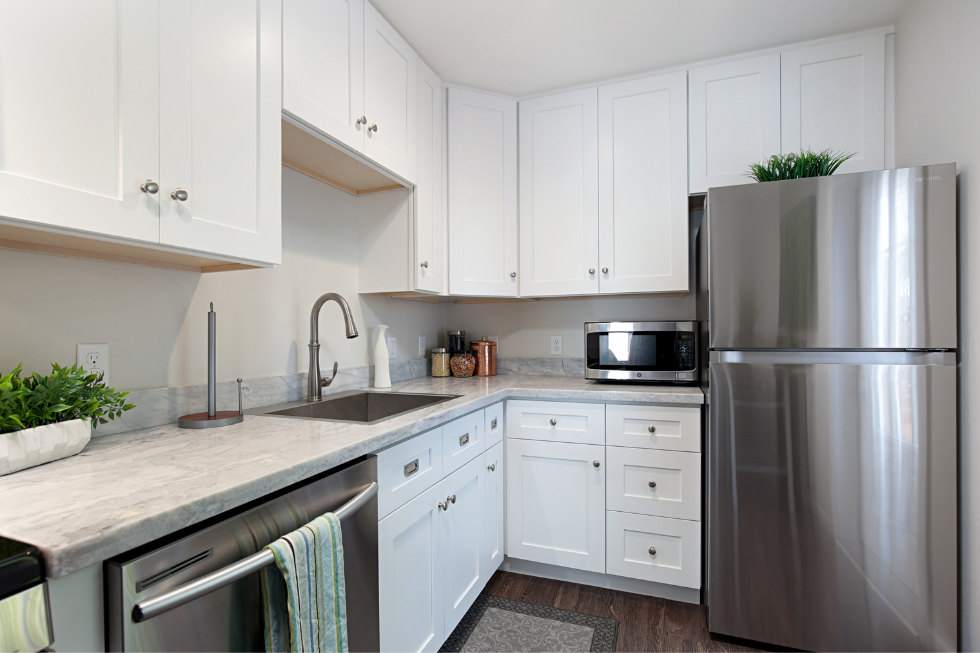
Why is there such a wide range of prices?
The quality of the prefab ADU, from low-end to luxury, accounts for much of the price variation. Naturally, size makes a difference. But there are other reasons too.
There are two basic types of prefab ADU: modular and panelized. They have different transportation requirements from the factory to your lot, as well as different installation processes. This impacts the end price.
Modular prefab ADUs
These units are specific predetermined sizes. They’re delivered in either a single module (for small ADUs) or multiple modules that are connected to one another on site. Modular prefab ADUs may require a crane to be dropped into place on your property.
Panelized prefab ADUs
These ADUs are constructed in panel sections that are delivered on a flatbed truck and assembled room by room on your site. You’ll have a framed ADU with a finished exterior. You’ll then install the electrical and plumbing as well as the interior finishes. Some panelized prefabs have a modular utility core that’s dropped into place with a crane.
Which costs more, prefab or stick-built ADUs?
A prefab ADU may save you some money, but the final cost is often about the same as a stick-built unit. While factory-based construction streamlines the build process for a prefab, it still requires the same amount of labor and materials as a stick-built ADU.
Then there’s the cost of transporting the prefab ADU to your site. You may also need to pay for a crane to lower the ADU into place.

This is an example of stick-built construction. Construction by BuildZig.
Site prep and foundation work (and cost) will be similar to that of a stick-built ADU.
As with stick-built ADUs, prefab prices vary depending on your location and the type of unit you’re building: prefabs come in affordable models all the way up to extremely high-end units.
Prefab ADU Costs Breakdown
When first researching the cost of prefab ADUs, you may be met with low quotes that may surprise you, but most likely those quotes are just for the unit itself. As mentioned before, there are a few more elements that will contribute to the final cost of your ADU.
Let’s break down the phases of prefab ADU design and construction and see how costs are determined in each phase. Remember, aside from transportation and delivery costs, all these items apply to stick-built ADUs too.
Design and permitting costs
The design fee should be included in the base price of the unit. Permitting fees may be included but often are not.
Most prefabs have pre-approved plans. Although you may be offered a few pre-approved design options, customizing a prefab unit—if the company allows it—may change the design and permitting fees.
Even small changes to windows and doors will alter the Title 24 energy calculations, so the pre-approved calcs are no longer accurate. That negates the “pre-approved” status and the plans may take longer to go through the city submittal process.
Demolition costs
If you need to demo a garage or other structure to make room for the ADU or the equipment needed to construct it, that may not be included in the prefab company’s base price. They may charge you extra to do it or direct you to a local contractor that can provide the service.
Site prep
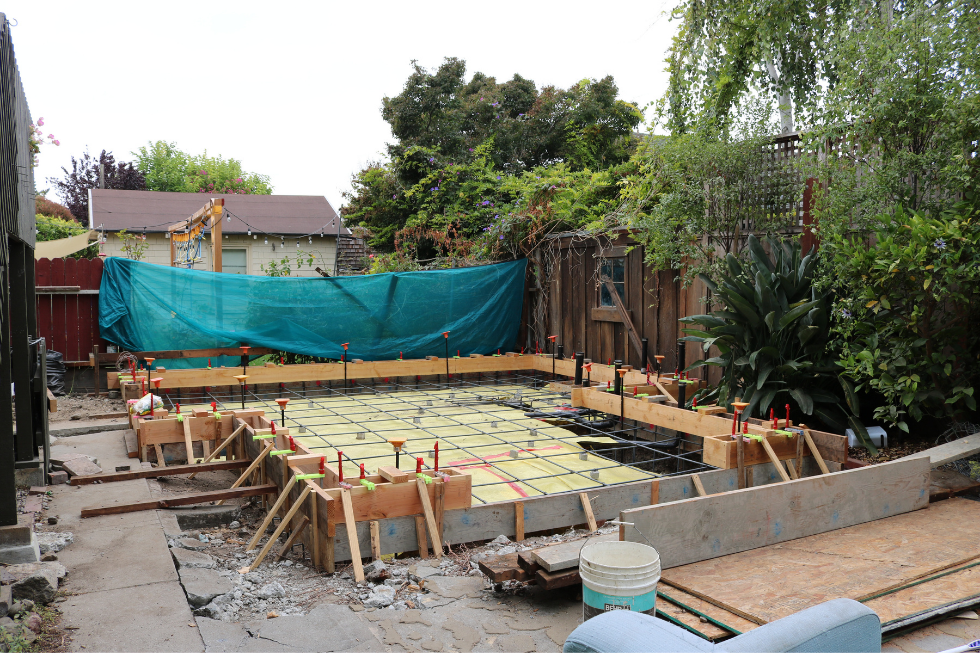
Many prefab companies include site prep in their base price, but be sure to check. Those that do may charge extra for a challenging site. Challenges include things like filling empty swimming pools, leveling a site with a slope, trenching through anything other than soil, and removing large trees.
Some sites will also need additional engineering reports to confirm that the soil can bear the weight of an accessory dwelling unit.
Licensed contractor
A few companies include a licensed contractor’s services in their base price for installation of the ADU. Many do not. In those cases you are responsible for hiring the contractor, negotiating their fees, and resolving any problems that may arise.
Foundation and utility hook-ups
These are often included in the prefab’s base price. However, the cost of things like trenching the electrical, water, and sewer lines are variable depending on your lot size and the ADU’s location. Upgrading the electrical panel, which is often necessary when adding an ADU to your property, may also cost extra.
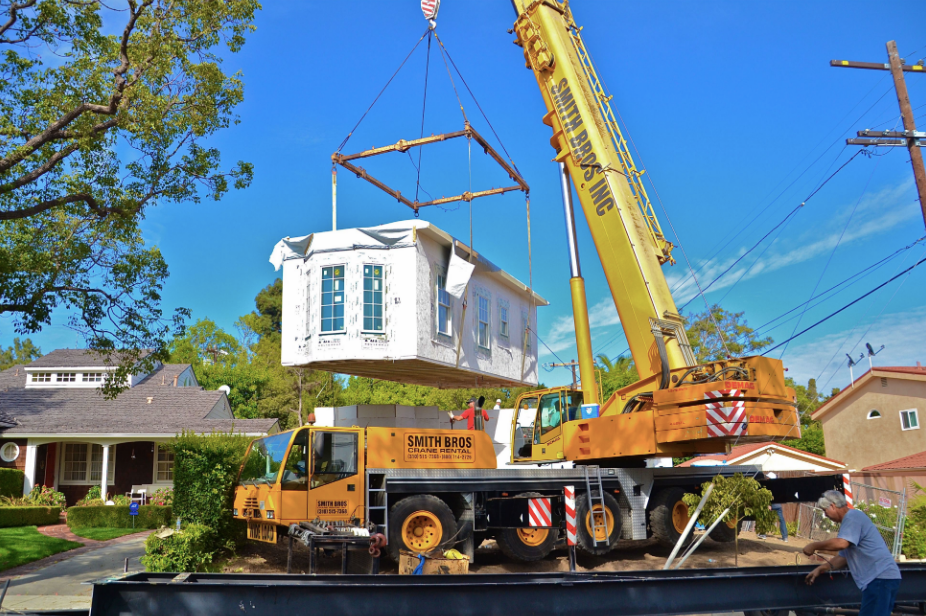
Delivering the prefab ADU
While many companies include the cost of delivery in their base price, some do not. Some charge per mile. In California, a police escort is required when transporting a load wider than 14 feet, and that will incur a fee.
If you need to close off your street while the ADU is being delivered and placed on the site, the city will likely charge a fee for that permit.
The cost of a crane to lift modular units into place may or may not be included, and it can be substantial.
Exterior finishes
Most or all prefab ADUs will include exterior cladding in the base price. Some companies offer different levels of finish or exterior upgrades.
Interior finishes
Some companies are all-inclusive, providing everything from flooring to cabinets to appliances. They usually have at least two levels of finishes, and sometimes you can pay more for an even higher grade.
But be aware that some companies do not include interior finishes in their base price, and you’ll be paying separately for all of it. You’ll also need to hire your own contractor to install the interior finishes.
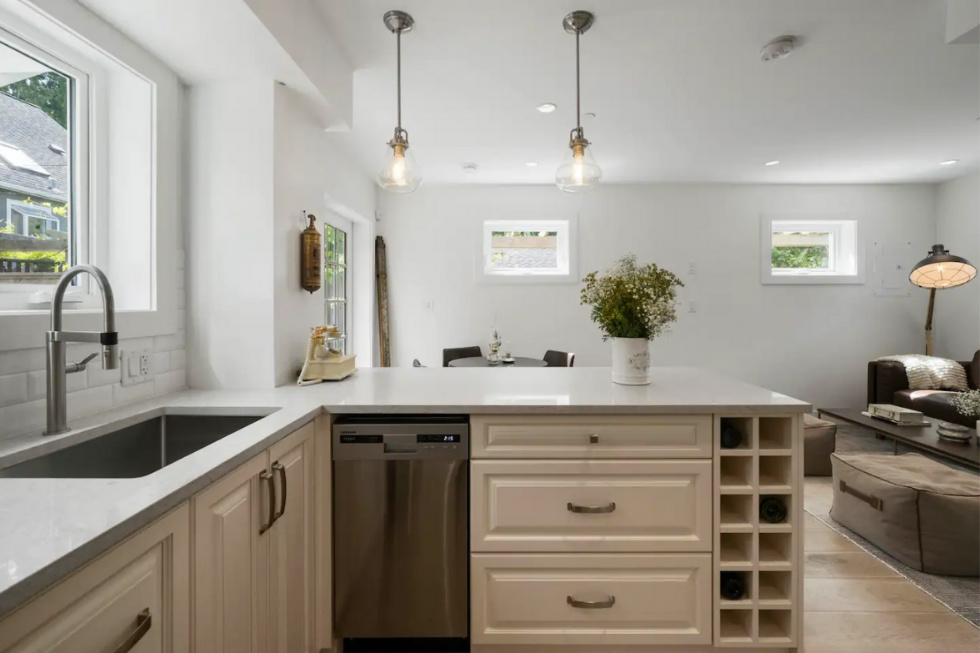
Questions for your prefab company
Check to see which of these items are included in a prefab company’s base price and how much you’ll be charged for items that are not included.
- Design
- Permitting
- Licensed contractor
- Demolition of existing structures
- Site prep
- Utility hook-ups
- Electrical panel upgrade
- Electrical upgrades due to local requirement for all-electric ADUs
- Foundation
- Delivery
- Mileage charge
- Highway escort fee
- Crane fee
- Installation
- Interior finishes, including insulation, drywall, flooring, cabinets, appliances, etc.
- Solar panels (required for non-garage conversion ADUs in California unless your lot is too shady)
Whether you choose a prefab or stick-built ADU, building an accessory dwelling unit involves a lot of time, money, labor, and materials. In the end, the relative ease and speed of prefab ADU construction and installation are what convinces many homeowners to go with prefab over stick-built. It makes a complicated project feel more manageable and less intrusive.
It can be hard to weigh the advantages of a prefab ADU against your stick-built options or a garage conversion. Our ADU consultants can help you look objectively at the pros and cons, evaluate your site, and move forward with an ADU that’s the very best fit for your lot, budget, and future plans.
Is a prefab ADU right for you? Enter your info below to receive our Prefab ADU Checklist!
Maxable is California’s leading ADU marketplace. After writing state laws, educating thousands of homeowners, and completing hundreds of site evaluations and ADU projects, we know accessory dwelling units better than anyone else! Get in touch when you’re ready to find out the next steps for your project.
Maxable makes planning, hiring, and building your accessory dwelling unit simple
Want to explore your options on how to get started on your ADU? Our team is here to connect you to the best local designers and builders for your ADU project. It all begins with an ADU Planning Phone Call. Talk to you soon!
* Source: ADU Compare. https://aducompare.com/adu-prices





